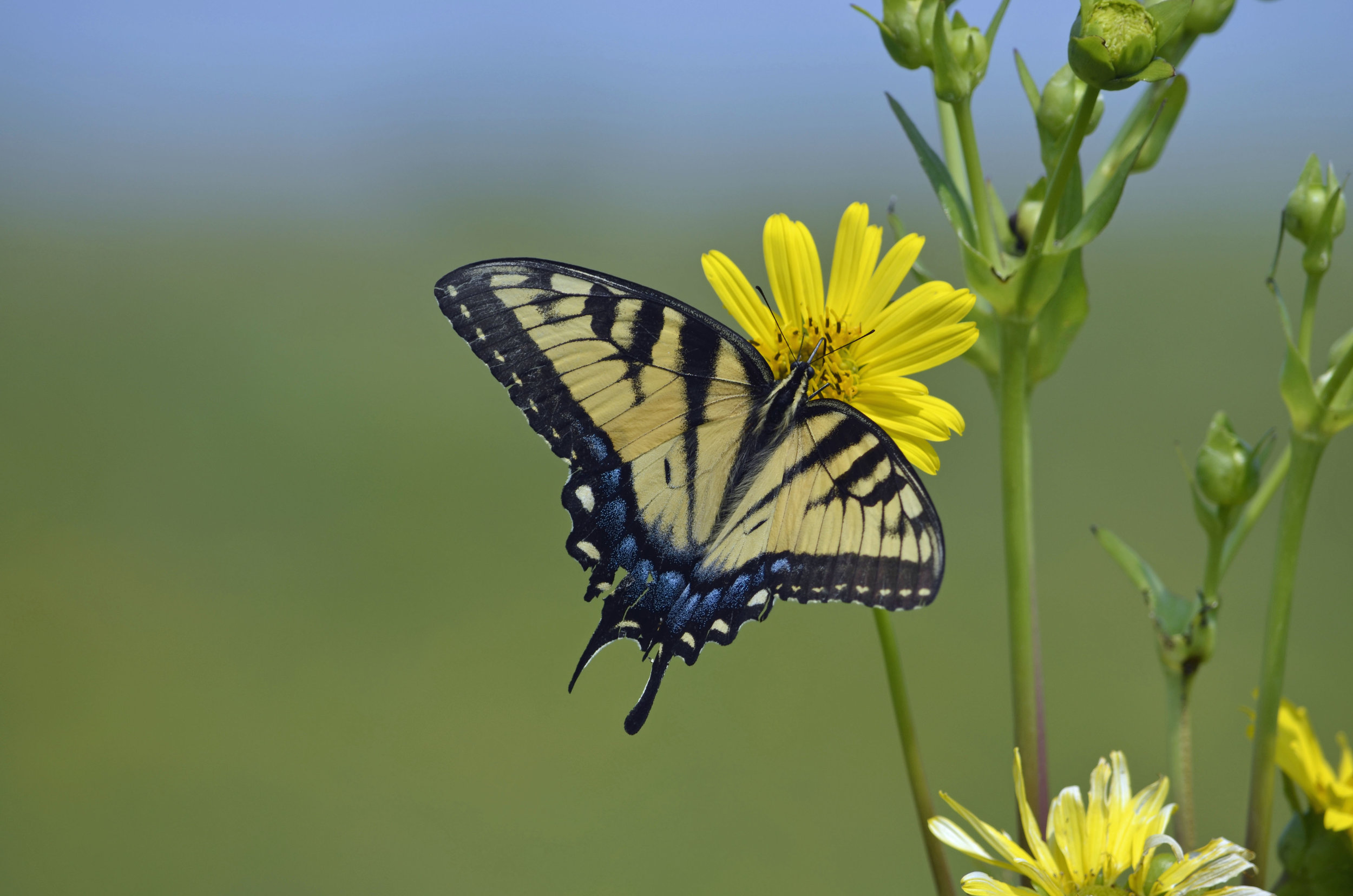On a recent early morning, I was looking out our kitchen window and bemoaning the fact that both the swamp white oak and tamarack tree in my view were full of Japanese beetles. I had noticed hundreds of these shiney bugs in both trees the day before and we were making plans on how to rid the trees of these damaging insects.
The early light enabled me to notice a number of birds actively feeding in those trees. First, an eastern phoebe with two young perched nearby was plucking the beetles from the leaves and feeding them to the young. Next, a gray catbird flew into the action and ate a few before carrying some away, and then a song sparrow, followed by some house sparrows that eagerly ate some too. Before long, a beautiful Baltimore oriole came by to partake of the feast! I had to know more.
My research showed that the champion beetle eaters are European starlings followed by blue jays, robins, crows, grackles, kingbirds, woodpeckers and purple martins, to name a few. Some birds eat the grubs, some the adult beetles, and some both.
This made me think about the economic value of birds and their work as pest controllers, especially given the fact much of the credit for this service is given to our declining cave bat mammal species who struggle with white nose syndrome. I continued to look for more evidence of the value of these flying bug exterminators.
The most recent summer edition of Living Bird magazine (7/17) contains an article on this topic titled Analysis: The Economic Value of Birds by Cagan H. Sekercioglu. In his article, he mentions a recently published book called Why Birds Matter, authored by himself along with Chris Whelan, University of Illinois, Chicago and Dan Wenny, San Francisco Bay Bird Observatory.
Sekercioglu talks about the large economic value of pest control by birds saying, “Birds can reduce the intensity of spruce budworm outbreaks and mitigate damage on spruce tree plantations comparable to effective insecticides. In Washington (state) avian control of spruce budworm was calculated to be worth at least $1,473 per square kilometer per year.” He goes on to site many other examples of ecosystem services of birds as pollinators, seed dispersers, and even carcass cleaners (disease control).
















